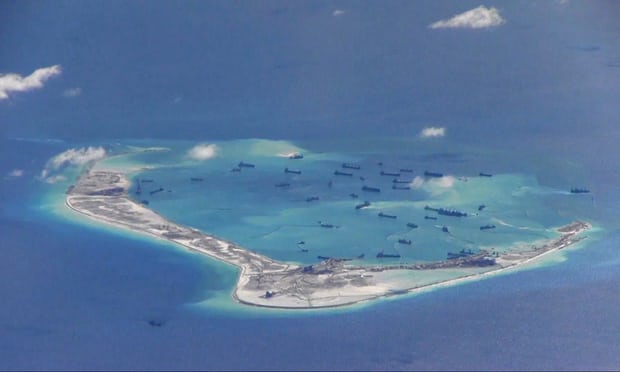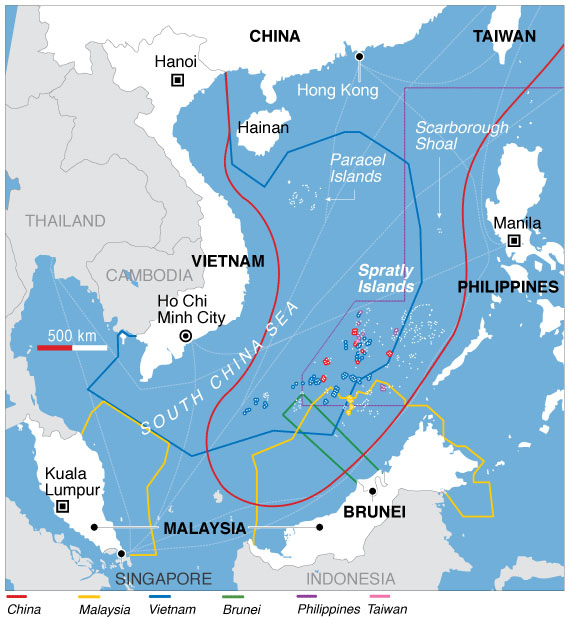
China has used the distraction of the North Korean nuclear issue to bolster its presence in the South China Sea, says a US think tank.
The Asia Maritime Transparency Initiative, part of Washington’s Center for Strategic and International Studies, claims that satellite images show that Beijing has continued to install high-frequency radar and other military facilities on its man-made islands.
It says the facilities cover 72 acres of the Spratly and Paracel islands, territory that is claimed by several other Asian nations, including the Philippines.
The US and its allies oppose China’s militarisation of the disputed waters, due to concerns that Beijing could use them to deny access to crucial trade routes. Some $5 trillion in trade passes through the region every year.
Speaking at a press briefing today (Friday, December 15), China’s foreign ministry spokesman Lu Kang hit back at the claims. He said: “It’s completely normal for China to conduct peaceful construction and build essential defence equipment on its own sovereign territory.
“We believe certain people who have ulterior motives are making mountains out of molehills and stirring up trouble.”
The report said that over the last few months China had constructed what appeared to be a new high-frequency radar array at the northern end of Fiery Cross Reef in the Spratlys.
Subi Reef has had tunnels dug that could be for ammunition storage and another radar antenna array and radar domes, the report said.

Construction on Mischief Reef included underground storage for ammunition and hangars, missile shelters and radar arrays.
Smaller-scale work had continued in the Paracel Islands, including a new helipad and wind turbines on Tree Island and two large radar towers on Triton Island.
It said the latter were especially important as waters around Triton had been the scene of recent incidents between China and Vietnam and multiple US freedom-of-navigation operations.
Woody Island, China’s new ‘capital’ in its South China Sea province, saw two first-time air deployments “that hint at things to come at the three Spratly Island air bases farther south,” the report said.
Beijing claims that the air strips, fighter planes and missile installations have been constructed to protect civilian fishing boats.
On Tuesday, US Secretary of State Rex Tillerson reiterated a call for a “freeze” in China’s island building and said it was unacceptable to continue their militarisation.
The Malacañang is yet to comment on the report.
Meanwhile, the official Xinhua news agency reported today that China’s southern island province of Hainan has revealed a satellite launch plan to “assist remote sensing coverage” over the South China Sea.
The mission will start in 2019 with the launch of three optical satellites, Xinhua cited the Sanyan Institute of Remote Sensing as saying.
